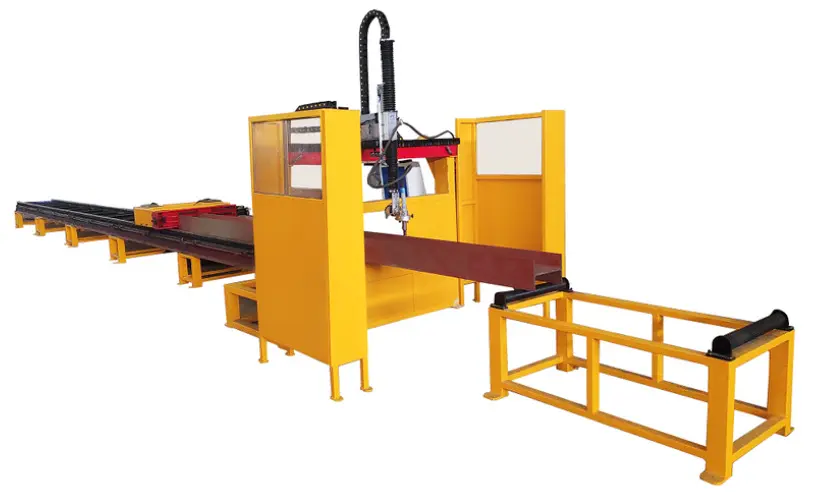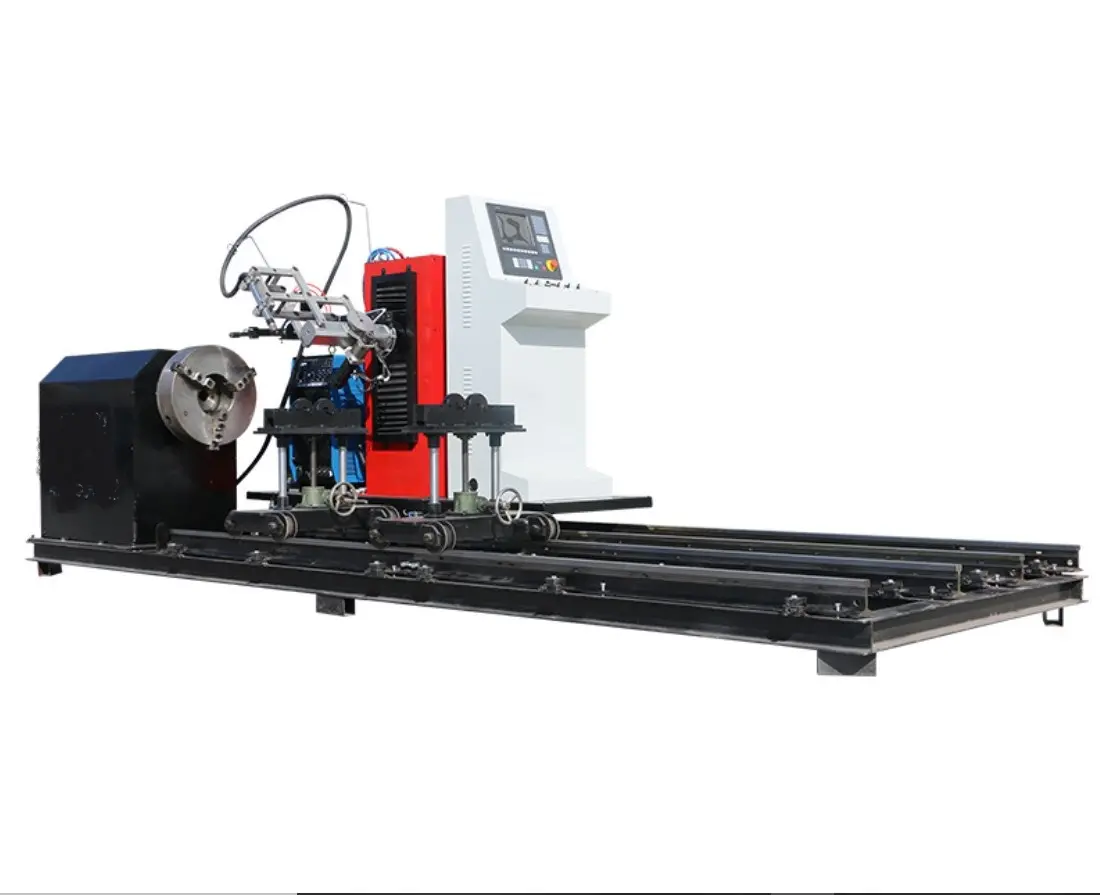Auxiliary gases in laser cutting
Air cutting is widely loved by laser processing customers because of its low cost, which only requires an air compressor and the electricity consumption of the equipment itself.
However, there are some disadvantages of cutting, first, the cut surface may produce burrs, and with the increase in thickness, the more obvious burrs, the need for secondary processing to clean up, which will reduce the overall production efficiency of the product.
Secondly, the cut surface will be blackened, affecting product quality. Therefore, for customers who do not have high requirements for smoothness and colour of the section, and who pursue efficiency, air can be used for cutting.
We used 20,000 watts of air cutting respectively cut 14mm and 25mm carbon steel plate, 14mm carbon steel plate bottom almost no burr, the finished product is better, while 25mm carbon steel plate effect is obviously slightly worse than 14mm effect.

Air laser cutting is mainly applicable to stainless steel, carbon steel, aluminium, brass and other materials cutting.
Oxygen
Oxygen cutting is the most common and traditional cutting method.
Oxygen and iron chemical reaction heat to promote the metal heat absorption and melting, can greatly improve the cutting efficiency, to achieve a thicker material cutting, significantly improve the processing capacity of the laser cutting machine.
Oxygen cutting compared to air cutting, the section will be smoother, cutting thicker plates, the effect will be better.
The disadvantage of oxygen cutting is that, when cutting, due to the presence of oxygen, it will produce an obvious oxide film on the end face of the cut, making the cut section black, and cutting with oxygen will produce a quenching effect on the material around the cutting surface, increasing the hardness of this part of the material, which will have a certain impact on the subsequent processing.

Oxygen laser cutting is mainly suitable for cutting carbon steel, stainless steel, electroplated steel, copper and other materials.
Nitrogen
When nitrogen is used as an auxiliary gas for cutting, nitrogen will form a protective atmosphere around the melted metal to prevent the material from being oxidised, thus ensuring the quality of the profile.
The material cut with nitrogen has excellent end face quality, does not contain any impurities, and the cut end face is the original colour of the metal.
This end face is very receptive to powder coating and also ensures a proper welding surface. It usually does not require any secondary operations.
Nitrogen also has its disadvantages, as it does not react chemically with the metal, there is no heat of reaction generated, the cutting ability is not as good as oxygen, and the nitrogen consumption for nitrogen cutting is several times greater than that of oxygen, the cost of cutting is higher than that of oxygen cutting.
When using nitrogen cutting, we need to pay attention to the fact that the change of gas flow has a great influence on the cutting, and under the condition of ensuring the pressure of cutting gas, we must ensure that the gas flow is sufficient.

Nitrogen laser cutting is mainly applicable to stainless steel, aluminium, carbon steel, brass and other materials cutting.
KW | Material | Thickness mm | Speed (m/min) | Auxiliary gas |
20 | Cs | 14 | 8 | Air |
20 | Cs | 25 | 2.6 | Air |
20 | Ss | 14 | 7.5 | N2 |
20 | Ss | 25 | 1.2 | N2 |
12 | Cs | 14 | 1.4 | O2 |
15 | Cs | 25 | 1.4 | O2 |
comprehensive analysis
We used air, nitrogen, oxygen, respectively, cut 14mm and 25mm carbon steel plate and stainless steel plate, the data are shown below.
Combined with the cutting effect above, the conclusion is as follows.
If cutting ≤ 20mm carbon steel plate, air and oxygen cutting finished product is not much difference, but the air cutting efficiency will be higher.
If cutting ≥25mm carbon steel plate, to ensure the cutting effect, it is more appropriate to cut with oxygen, or when cutting with air, the power will be adjusted to a higher level.
When cutting materials such as stainless steel and aluminium, to ensure that the end face is smooth and not oxidised, it is necessary to cut with nitrogen.
Without considering the finished result, but only the cost, nitrogen costs more, followed by oxygen and air.
In summary, to find the right auxiliary gas for your model, you have to consider multiple factors, such as the power of the equipment, the cutting material, and the cost of cutting.





